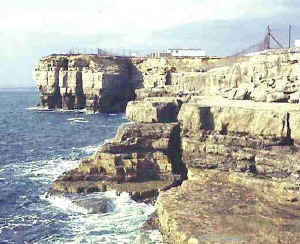|
WHAT IS STRATIGRAPHY?
Walking along cliffs that were cut by ocean waves or rivers have always
made humans wonder how they were formed. The time required to create
such majestic towers has created serious debate, both scientific and
religious.
Geologic time was very difficult for scientists to
"discover." It was not until the mid 18th century
that James Hutton, a Scottish geologist, realized that the Earth was
many millions of years old. This was an unimaginable idea because people
in his day believed the Earth was only a few thousand years old. Hutton
tried to develop scientific methods to determine the time required for
every day geologic processes and compare with the past. For example he
tried to calculate mud accumulating in the ocean today, to figure out
how much time had passed since the formation of the Earth. He used the
term "uniformitarism" to compare the present day rock
cycle with the past rock cycle. From these comparisons you can interpret
how rock layers or strata were formed but not the length of time.
You can determine which stratum is younger or older, just by the
position of the strata.
|

James Hutton wondered about the rocks from the Dorset, United
Kingdom coastline

James Hutton
|